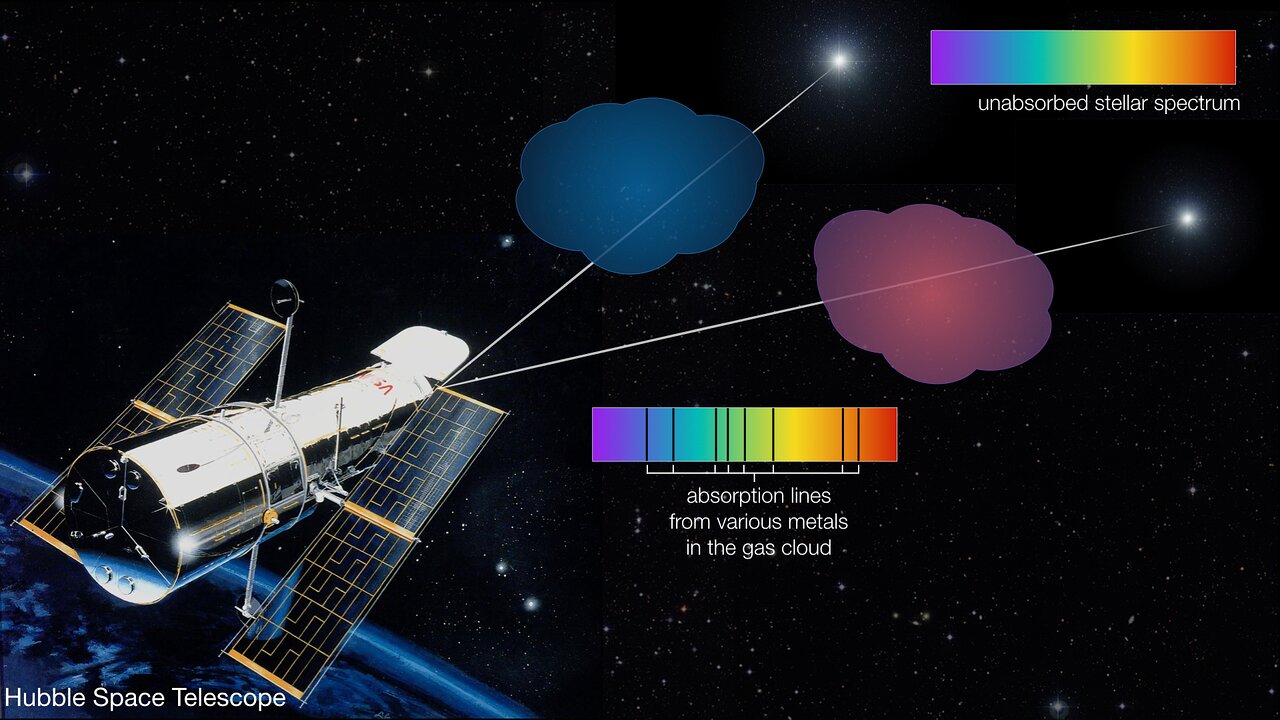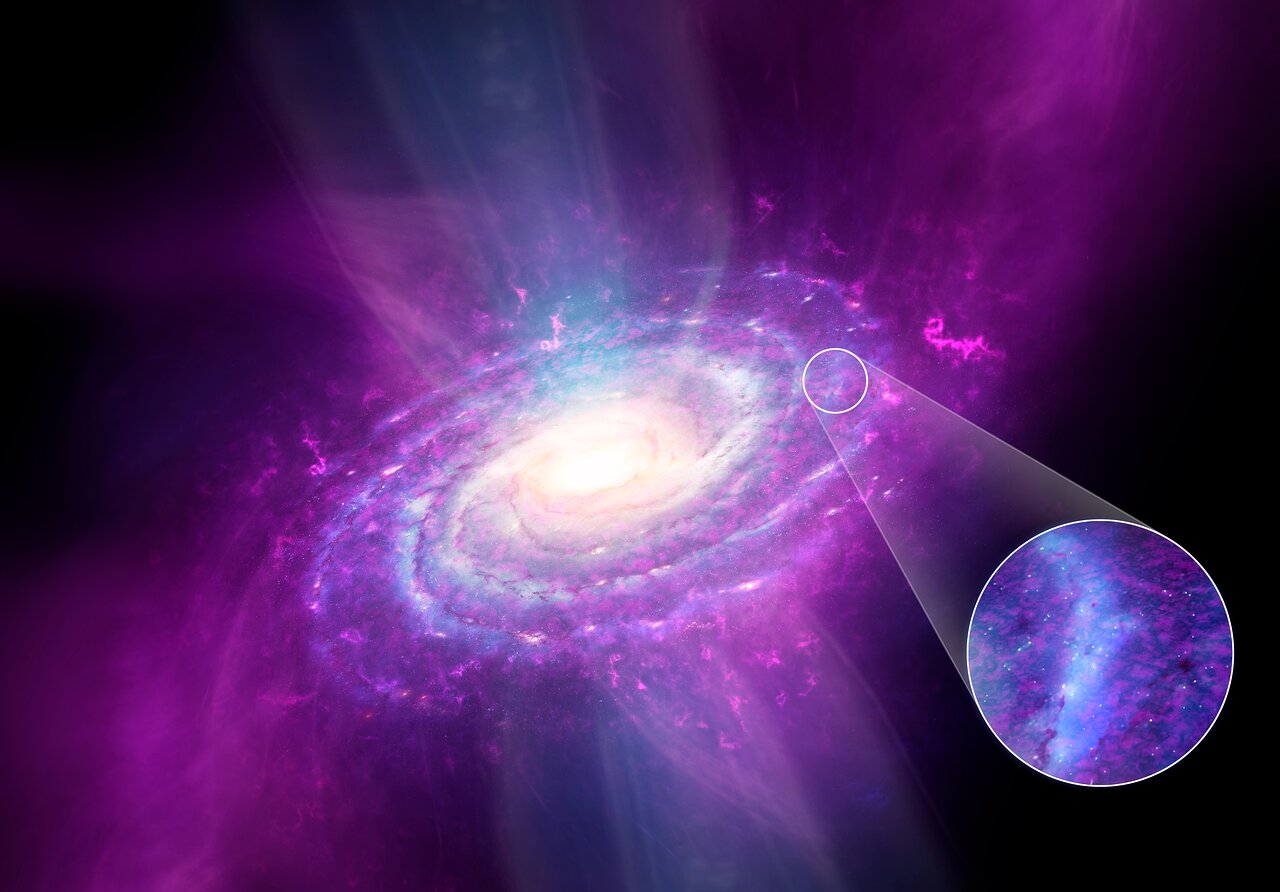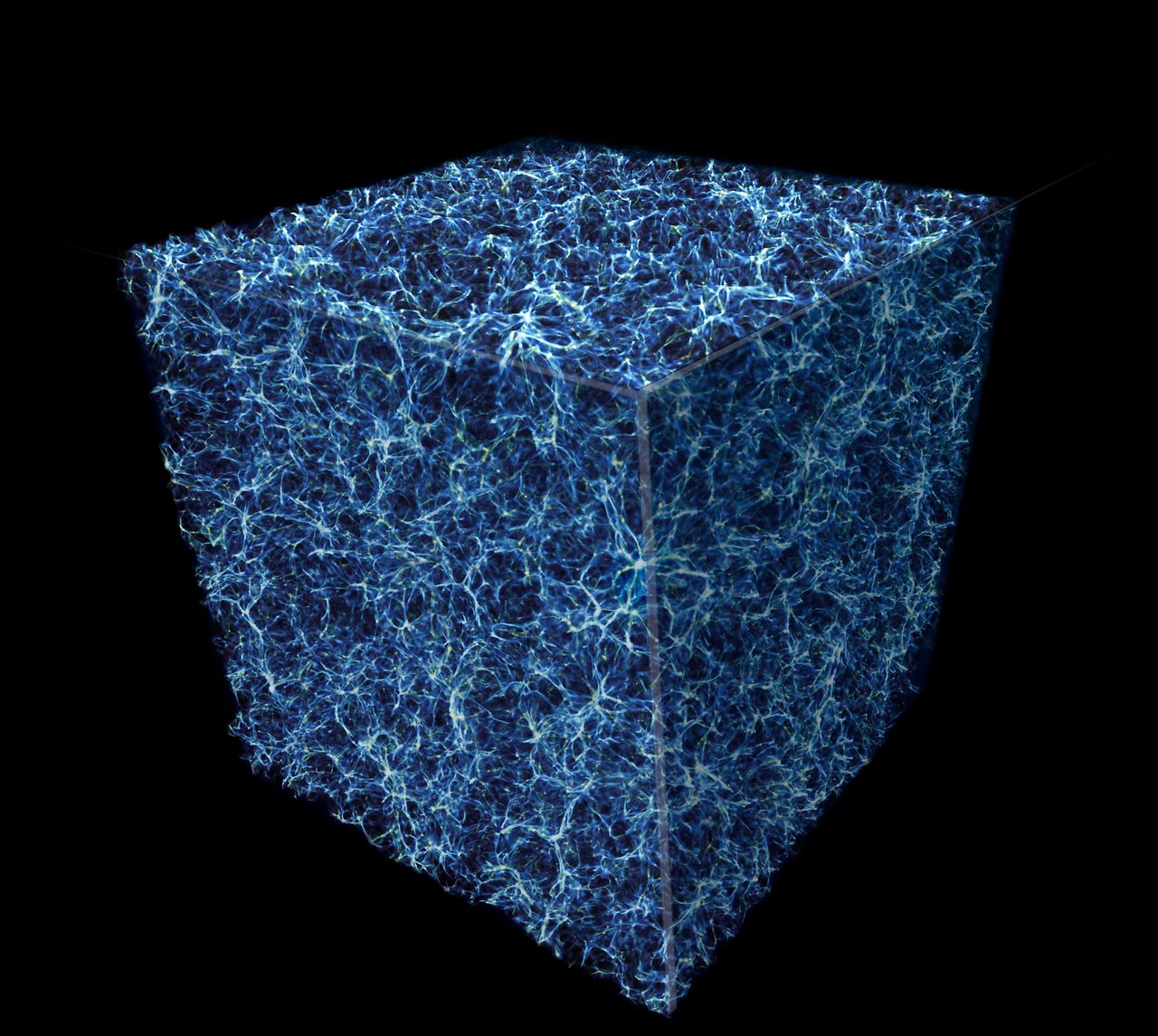As Carl Sagan put it, “we are all made of star stuff”. But what is the star stuff made up of? A team of astronomers has recently measured for the very first time the composition of the gas flowing between the stars in the Milky Way. The research, which used archive data from ESO’s Very Large Telescope (VLT) and Hubble Space Telescope observations, reveals that this “interstellar medium” is not well mixed, as previously assumed. Instead, different amounts of chemical elements are spread in different areas much like a swirl of milk in a cup of coffee. The star stuff that we are made of is not well stirred in our galactic neighbourhood, but why?
The interstellar medium is the stuff between the stars in a galaxy –– a complex mixture of gas and dust. It is also one of the ingredients required to make a galaxy. Gas flows in from the cosmic web –– fine threads of matter that connect all the galaxies in the Universe, also known as intergalactic medium. This gas is pristine, meaning it is mainly made up from hydrogen and helium, the lightest elements in the Universe, and contains few metals (which, for astronomers, are any chemical element heavier than helium).
From this gas, the galaxy’s stars begin to form. The stars produce heavier chemical elements during their life cycles, which are released back into the interstellar medium as the stars reach the end of their lives. New stars are formed from the interstellar medium, now enriched with metals from their ancestors, and the sequence begins again.
The chemical elements blown out by the stars also go on to form everything else in the galaxy, such as dust (which is formed by tiny particles of solid material), planets and, in Earth’s case, the creatures that live on them. Understanding how a galaxy forms and evolves from a chemical perspective can thus shed light on the life cycle of chemical elements that eventually allow life on Earth.
Up until now, it was assumed that the interstellar medium was a smoothly blended mixture of the pristine gas from the cosmic web and the enriched gas given out by dying stars. Therefore, stars born at the same time in the same area of the galaxy should have the same chemical composition.
But is the interstellar medium really this well mixed? No one had actually been able to measure the real abundance of metals in the interstellar medium before, but Annalisa De Cia, an astronomer at the University of Geneva in Switzerland, had an idea about how to change this.
To probe the interstellar medium, astronomers use a technique called spectroscopy. As the light of a star passes through the interstellar gas, the atoms in it will absorb very specific colours or wavelengths. Looking at the light from a star using spectroscopy produces a spectrum –– a “barcode” that tells us what the intervening medium is made of.

But there is a hitch. Only the gaseous part of the interstellar medium can be “seen” in ultraviolet/optical spectroscopy; atoms in dust grains don’t leave a spectral fingerprint. To calculate how metallic the interstellar medium really is, we need to account for the elements that are more likely to condense into dust and will therefore be absent from the spectrum.
De Cia’s background studying the gas in distant galaxies came in handy for this new research. Working out the metallicity of the interstellar medium in galaxies far away is incredibly difficult as astronomers are not able to observe individual stars and therefore have much less information to work with. De Cia pioneered a technique that compares the abundances of elements with different propensity to condense into dust grains. She then realised that this technique could be used a lot closer to home, to determine the metallicity of the interstellar medium in the Milky Way, including the “unseen” elements locked up in dust grains.
De Cia and her team picked 25 nearby stars and observed them with the NASA/ESA Hubble, analysing the spectral signatures left by different elements between those stars and us. One of the elements key to this method is titanium, which has a strong propensity to go into dust grains. It also happens to produce spectral features that are in exactly the range observable with the UVES instrument on ESO’s VLT, located at Paranal Observatory in Chile’s Atacama Desert.
Looking in the archive of data collected over the years with UVES, the astronomers found that, of the 25 stars they had chosen to study with Hubble, there was information on titanium available for 16 of them. And the good news didn’t end there. “All the UVES data that had been taken for those stars was already processed and ready to use for science,” said De Cia. A key titanium-shaped piece of the puzzle had fallen perfectly into place.
Combining the Hubble and UVES data, the team was able to measure the metallicity of the gas towards the 25 stars in their sample. The results, published recently in Nature, turned out to be surprising: the chemical elements were not evenly mixed inside the interstellar medium as previously assumed, but instead there was a large variation in their abundances, even over the small area they probed. Astronomers had previously assumed that our surrounding interstellar medium would have a composition similar to that of the Sun, but the actual metallicity was found to be about 55% that of the Sun; and in some regions it was as low as 17%.
“There are pockets of low metallicity, places where there are less chemical elements than we thought,” explains De Cia. “It’s like if you have a cup of coffee and you pour in milk, it doesn’t start out completely mixed. It still has little bits of pristine gas in it” says Andrew J. Fox (ESA/STScI), who also participated in this study.
These low-metal pockets are likely due to the contribution of pristine gas flowing in from the cosmic web, the same gas that sustains galaxies and allows them to go on forming new stars.

These results are exciting because they also help to explain some observations that previously puzzled astronomers, such as the spread in metallicities of stars of the same age which were expected to have similar abundances of metals. De Cia also hopes that this new finding will change the way astronomical modelling is done, with scientists moving to incorporate this unmixed interstellar medium measurement into models that predict the chemical evolution of the galaxy.
Follow-up research is now in the pipeline, hoping to build on this surprising result. Hubble and ESPRESSO, another instrument on the VLT, is currently obtaining data for use in these studies. “In an individual direction towards one star, we probably observed many clouds along one line of sight, so we would like to explore that diversity along one specific direction. For that we need high spectral resolution, and that’s where ESPRESSO will come in,” says De Cia.
The team is also looking forward to the first light of ESO’s Extremely Large Telescope (ELT), later this decade. The ELT is set to be the largest optical and infrared telescope in the world and will allow astronomers to see further than ever before. Spectrographic instruments on the ELT such as ANDES will have a high enough spectral resolution to study the chemical signatures imprinted by the first population of stars on the intergalactic and interstellar medium and will prove to be game changers in understanding the chemical evolution of distant galaxies.
When tomorrow morning you pour milk into your cup of coffee, remember that out there in space there is a similarly swirling interstellar medium, full of the star stuff that led to your existence.
Links
Biography Thea Elvin
Thea Elvin is Press Officer at The Lancet. Before she was a science journalism intern at ESO. She has completed an undergraduate degree in Natural Sciences at the University of Cambridge (UK) and a master’s degree in Climate and Atmospheric Science at the University of Leeds (UK) and is currently pursuing a career in science communications.



